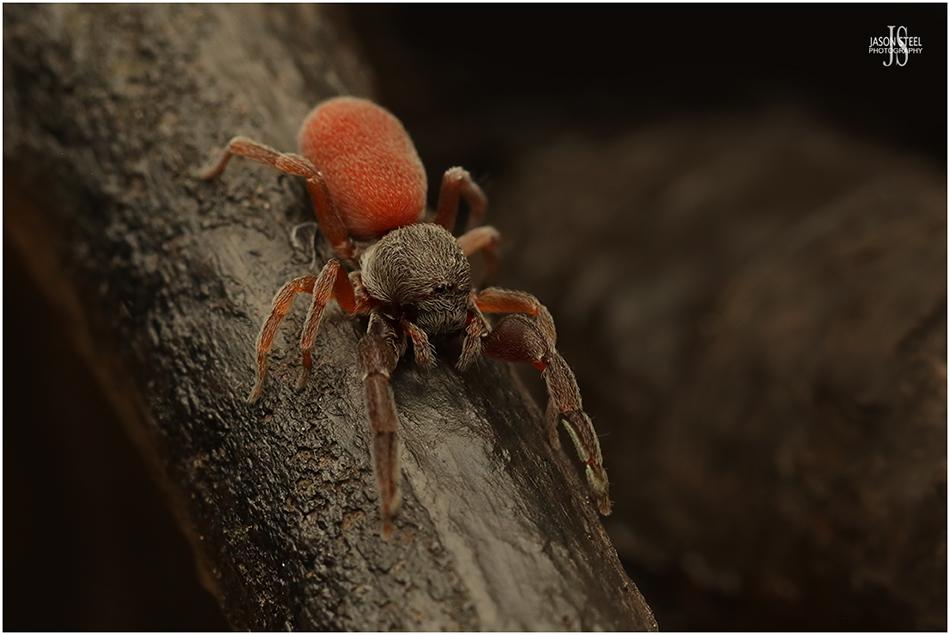
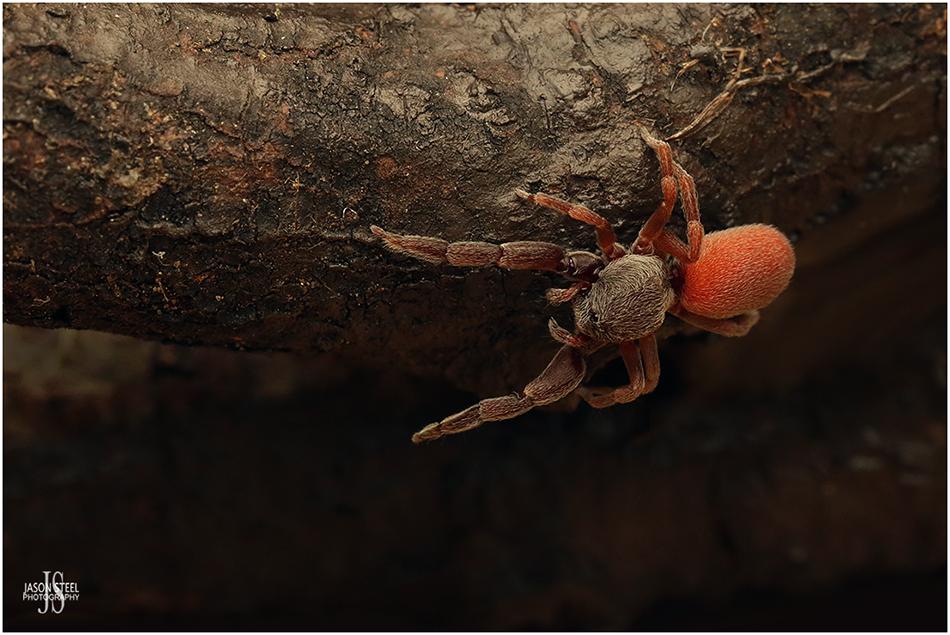
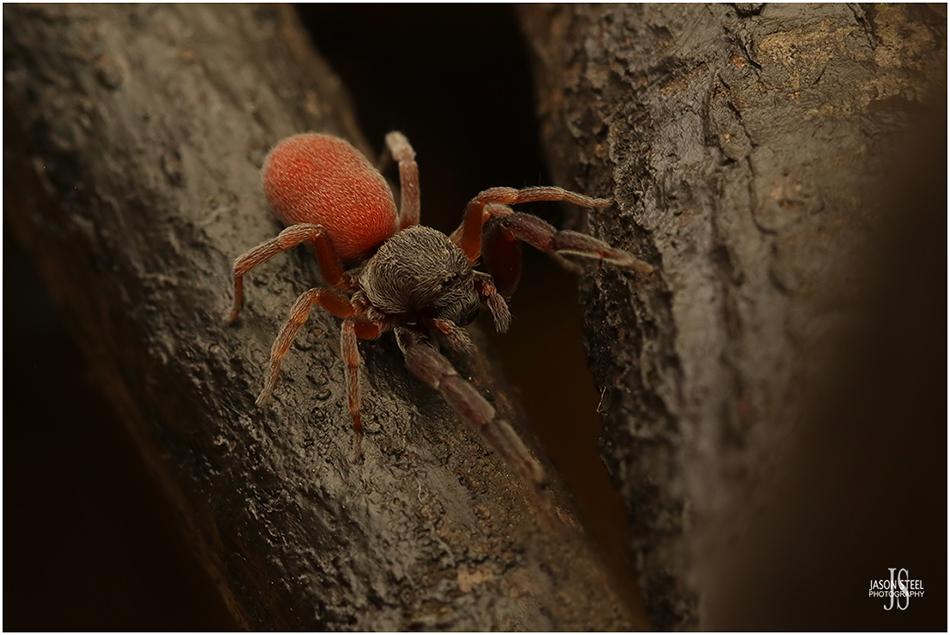
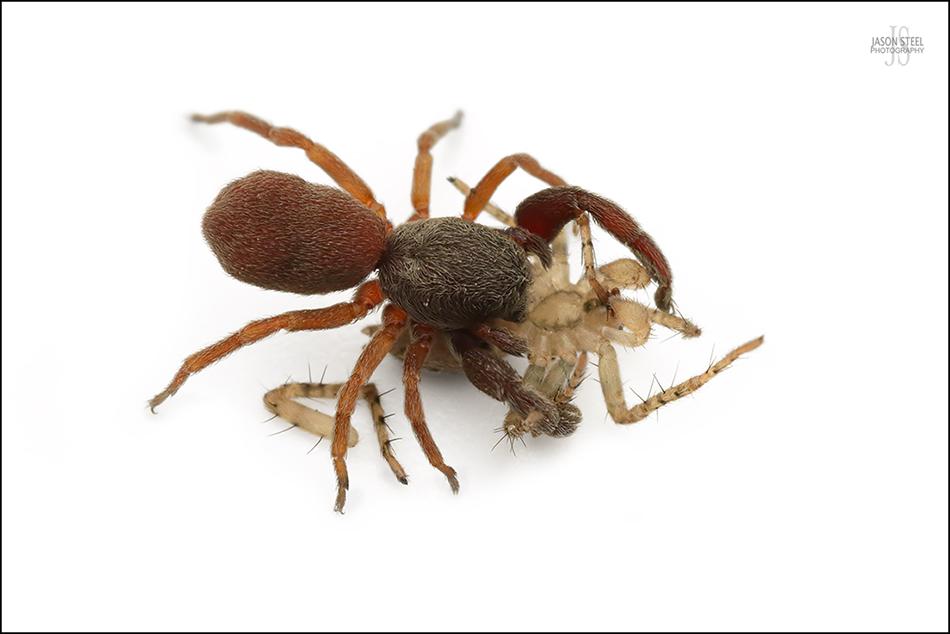
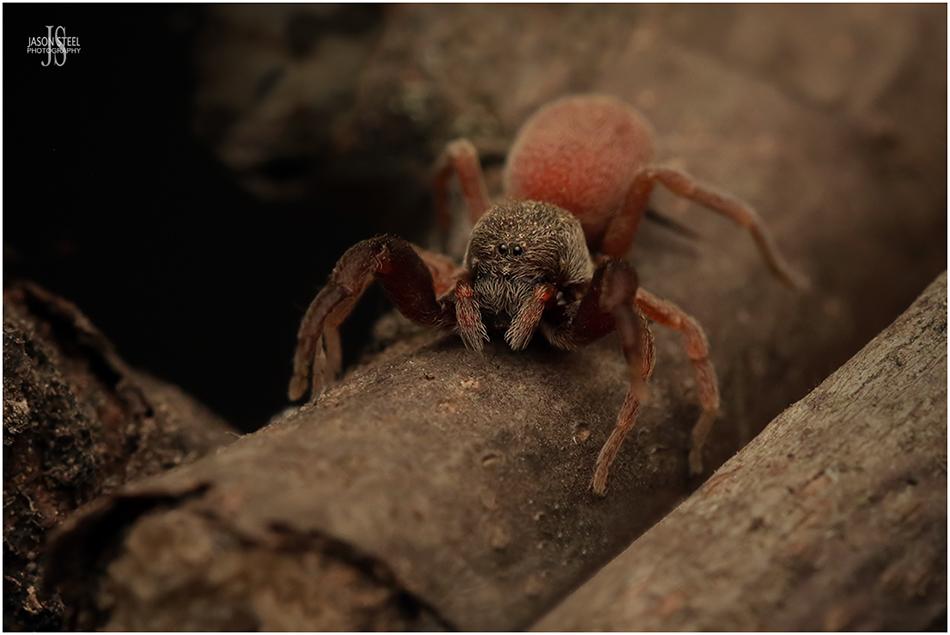
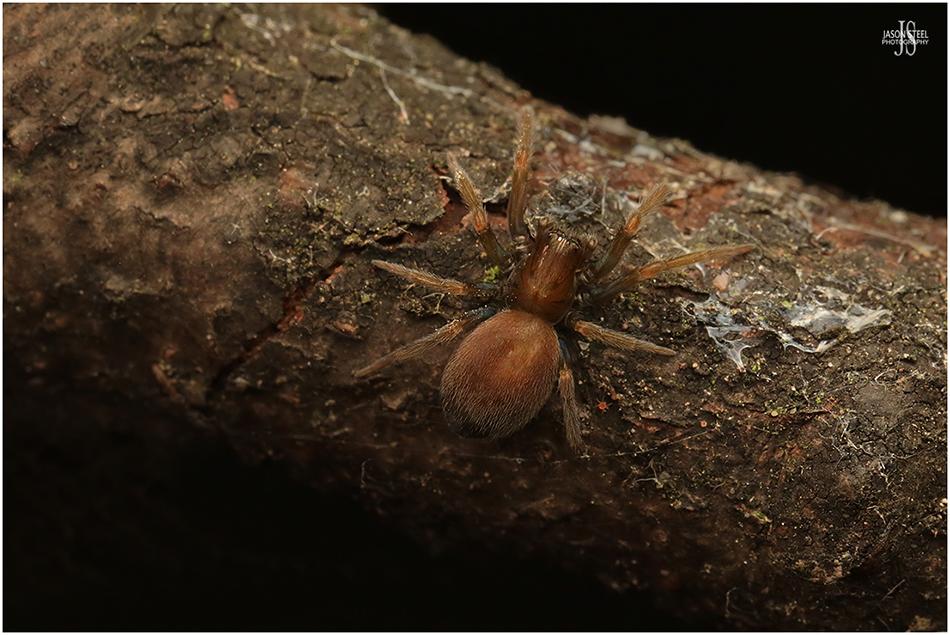
4.5mm female Rock Weaver (Pandava laminata) found in a garden centre in Uxbridge, August 2021.
Asian Limestone Spider / Rock Weaver (Pandava laminata, previously Amaurobius laminatus)
Pandava laminata is another non-native species that has recently been introduced to Europe and the UK from tropical regions of East Africa, Madagascar, Sri Lanka, Burma, Indonesia, Philippines, southern China, Okinawa, New Guinea and French Polynesia. The first sightings in the UK are believed to have been in 2020, from a garden centre in Buckinghamshire. This ground dwelling spider makes a lace web similar to Amaurobius species and usually arrives to the UK and Europe as an accidental import amidst oriental orchids. It builds its web between the exposed roots of the plants and the lowest leaves and shoots and stays hidden away amidst the roots. This nocturnal species prefers warm dry habitats and has been recorded in Europe inside greenhouses, hothouses and horticultural centres stocking orchids and other tropical plants. Females usually grow to a body-length of around 5.4 - 7mm, and males reach 5.5 - 5.8mm. Pandava laminata has been placed in the Titanoecidae family of Rock Weaver spiders. In Germany it is referred to as the "Kalksteinspinne" the Limestone spider or "Asiatische Kalkstein spinnen" the Asian Limestone Spider. This spider produces a pale white egg-sac which it attaches to its web and covers in debris to afford it some disguise and protection.
The first sighting and identification of this species in Europe was by Jäger in 2008, from the Cologne Zoo in Germany. Jäger noted that this spider species is easily distinguished from the other titanoecid spiders in Europe by the lack of any spots on the opisthosoma and a visible ring around the spinnerets.
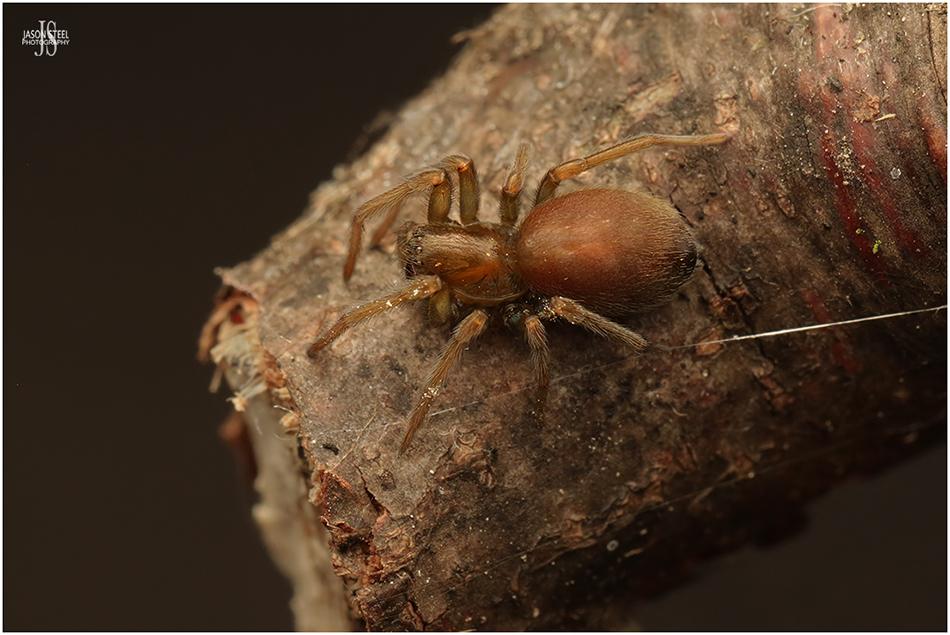
4.5mm female Rock Weaver (Pandava laminata) found in a garden centre in Uxbridge, August 2021.
* I would like to give huge thanks to Gen Popovici for sending me this specimen to photograph and add to my website. *
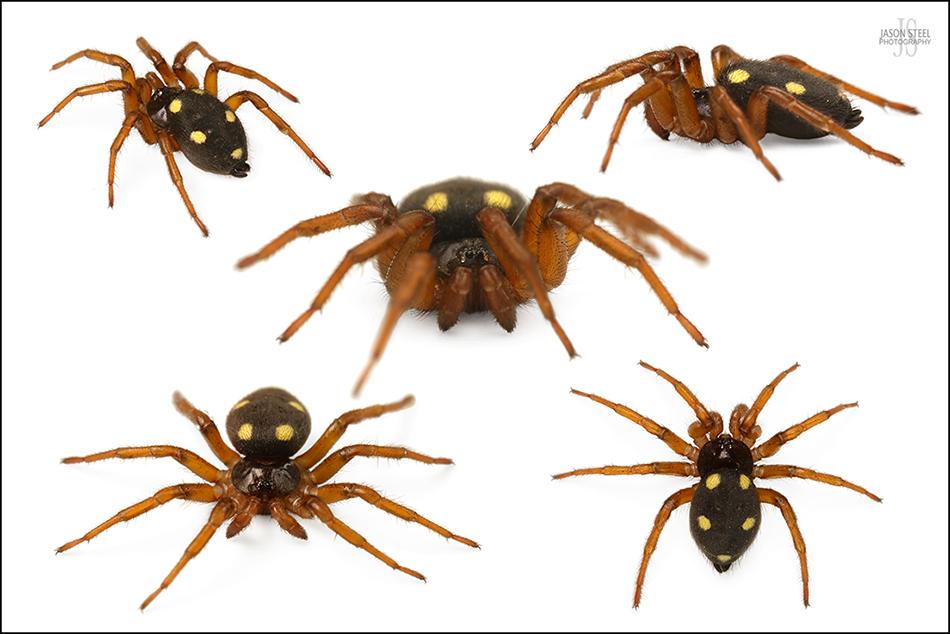
9mm Sub-adult Desert Round-headed Spider found amidst imported cork bought from Amazon, November 2021.
Desert Round-headed Spider / Yellow-spotted Spider / Star-web Spider - (Uroctea durandi)
Uroctea durandi is a non-native species from the Oecobiidae family of Wall Spiders / Disc-Web Spiders, and is native to north Africa and the Mediterranean. Whilst not established anywhere in the UK Uroctea durandi turns up here quite regularly amidst imported bark and cork, intended for the exotic pet trade. Most imports of cork and bark to the UK arrive from Spain or Portugal, where Uroctea durandi is the only Uroctea species found. Besides the term Desert Round-headed Spider, this spider is also known by various other common names in different countries, including the Yellow-spotted Spider, the Tent Spider and the Star-web Spider.
Sub-adults are light brown / orange with 5 light spots on their grey / brown abdomen. These spots are usually pale yellow but can vary from white to bright yellow. Specimens found indoors are often dehydrated and sometimes not all of the 5 spots may be visible on their shrivelled abdomen. The spider darkens as it ages and mature specimens are dark brown or black with a completely black abdomen exhibiting 5 prominent spots. Females grow to around 15mm in length, whilst the similar looking males reach only 6-10mm.
In their native countries Uroctea durandi are usually found in hot, dry areas, especially heathlands, where they live under tree bark and rocks. They hide under a distinctive small, star-shaped, tent-web, of around 4cm in diameter These tent-webs have many entrances and around 10-12 signally threads radiating from the corners. Once the threads are tripped the spider dashes out to trap its prey. The prey is not immediately grabbed or bitten but the spider instead rapidly circles its prey whilst wrapping it in silken threads., wagging its posterior from side to side as it does so. The remains of their prey can often be found scattered on the upper outside surface of their web. In the wild the Desert Round-headed Spider often feeds on ants, however they have been known to specialise on whatever prey is available locally, including millipedes. Male Uroctea durandi build a special web when the times comes to copulate with the female.
Uroctea durandi are sometimes also found in or on buildings where they have been known to build their webs on walls. The Oecobiidae family name actually comes from "Oeco biidae", which very roughly translates to "those who are house-living".
This species is not currently established anywhere in the UK. It's often reported that Uroctea durandi would be unlikely to survive anywhere outdoors in Britain, however the winters in some of the countries where it is considered native or naturalised, such as Bosnia and Herzegovina, can be just as harsh as those in the UK so this species may have the potential to eventually become established here. Where accidentally imported they could easily join other non-native species, including Ulborus plumipes, that have colonised conservatories, greenhouses and hothouses throughout the UK. In their native countries, such as Bosnia and Herzegovina, these spiders remain active during the winter months as long as the temperatures remain above freezing. As the temperatures drop the spider enters a state of complete torpor until warmer weather arrives. The bite of the Desert Round-headed Spider is not considered to be harmful or significant to humans.
LINK 1 LINK 2 LINK 3 LINK 4 LINK 5 LINK 6 LINK 7 LINK 8 LINK 9
* I would like to give huge thanks to Amanda Smallwood and her son for allowing me to photograph this specimen and add it to my website. *
Uroctea durandi was found at Kew gardens, back in 2002, after arriving amidst imported oak cork bark from Portugal - LINK.
Here are some more recent examples of this species being found in the UK as an accidental stowaway amidst imported cork / bark:
LINK 1 LINK 2 LINK 3 LINK 4 LINK 5
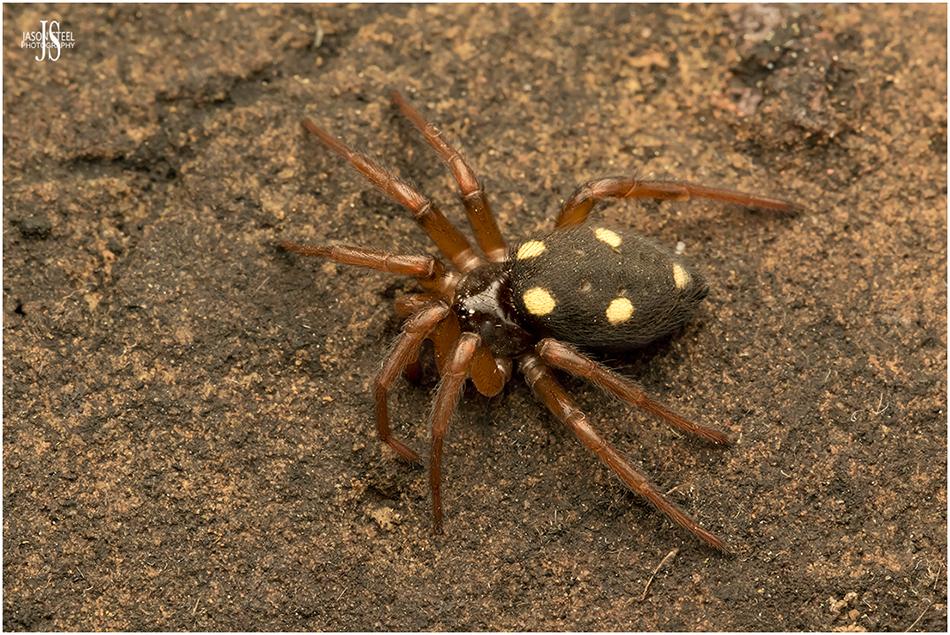
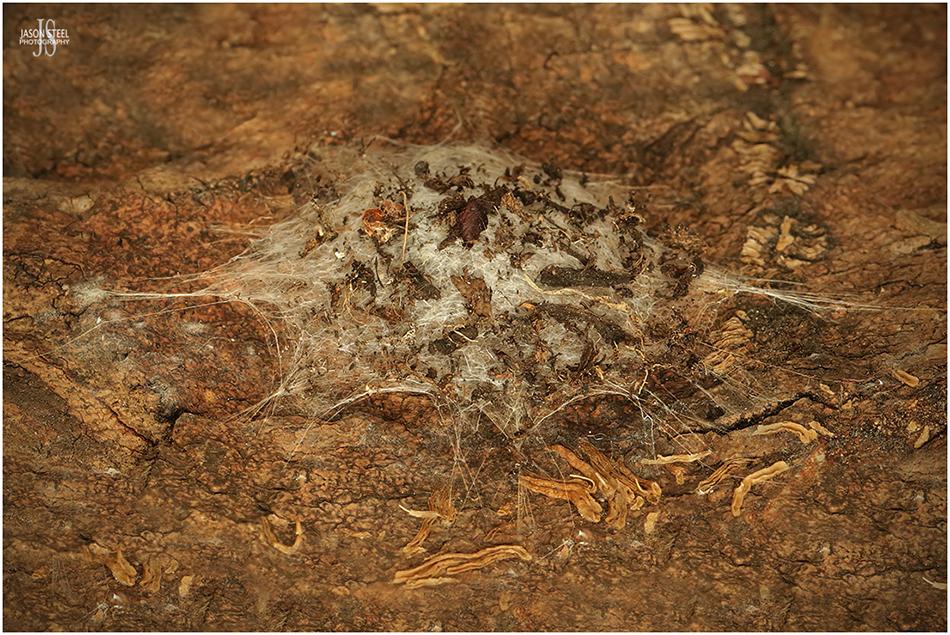
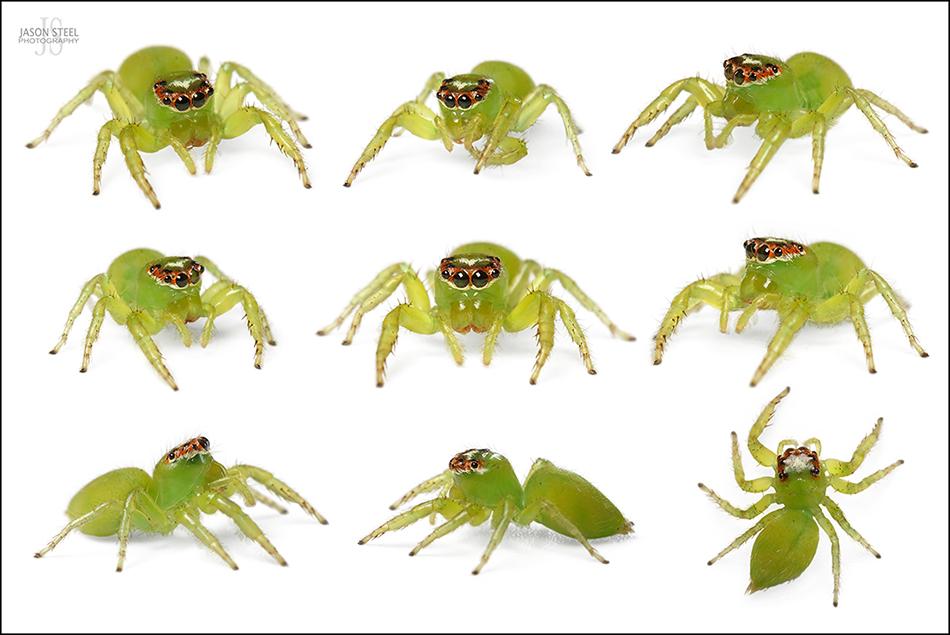
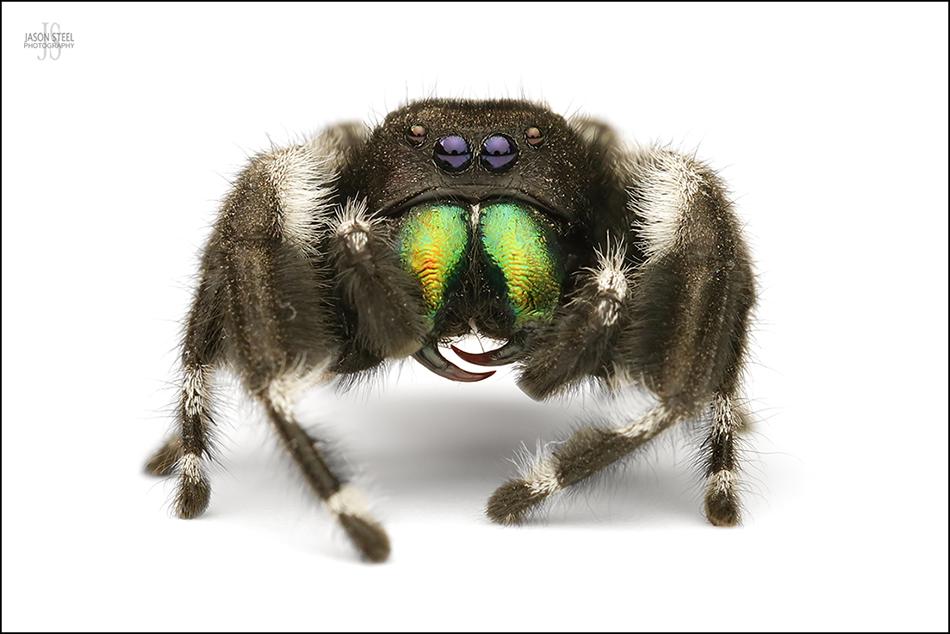
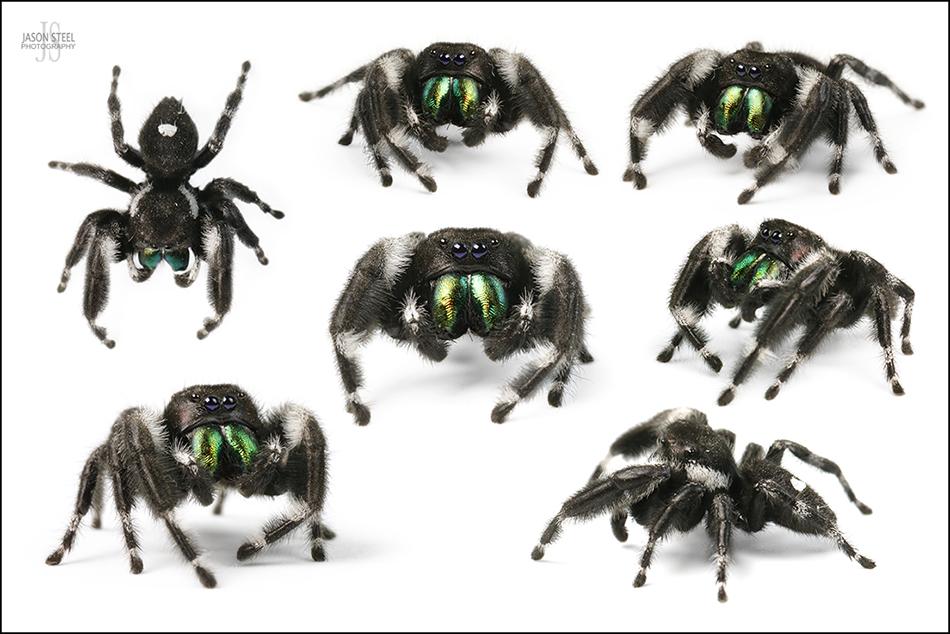
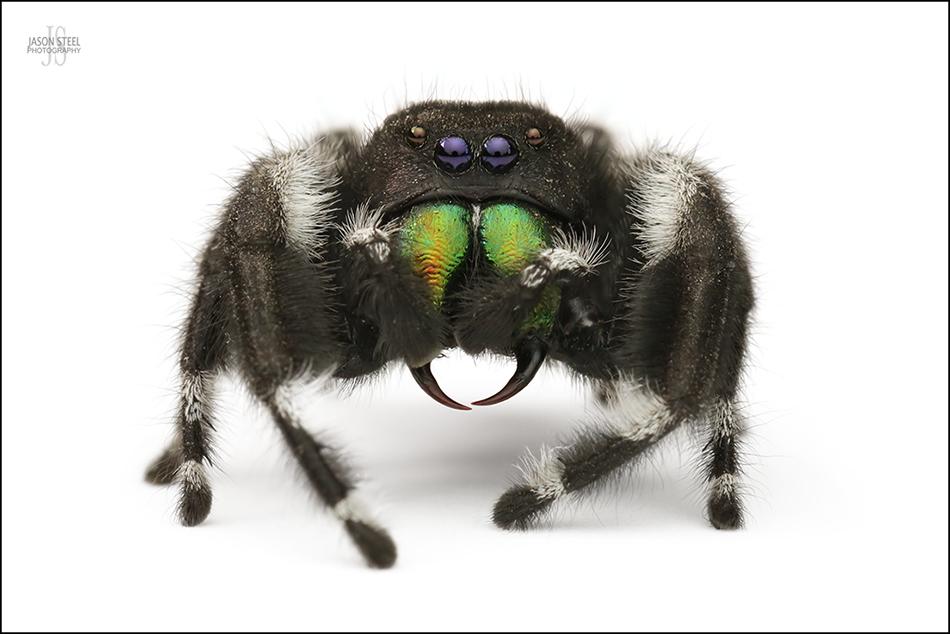
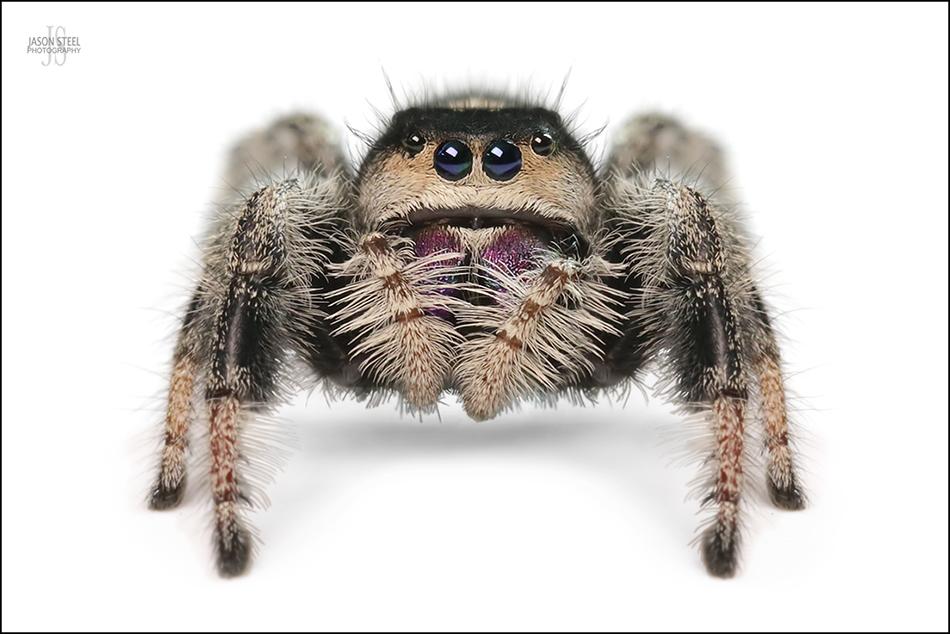
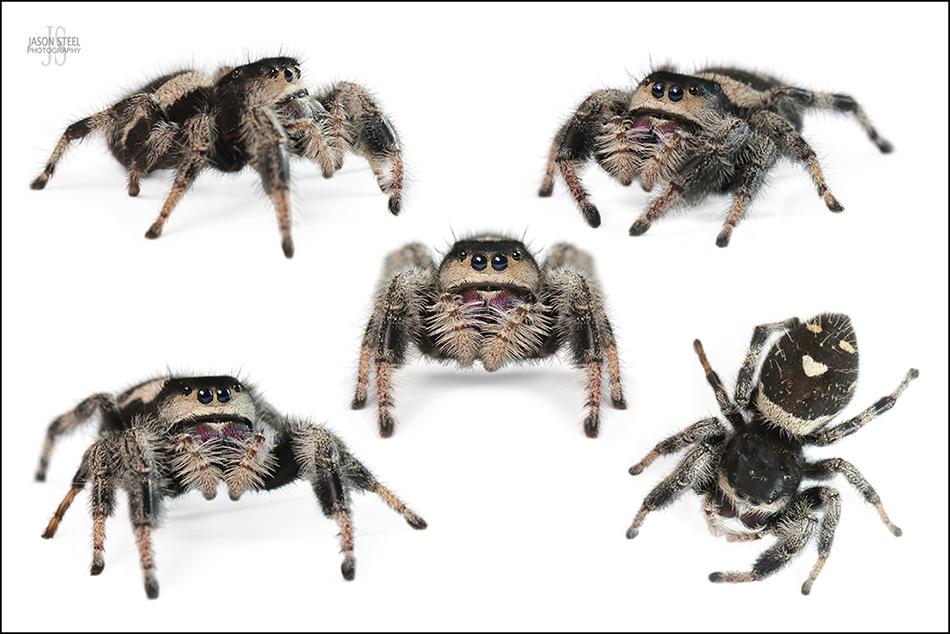
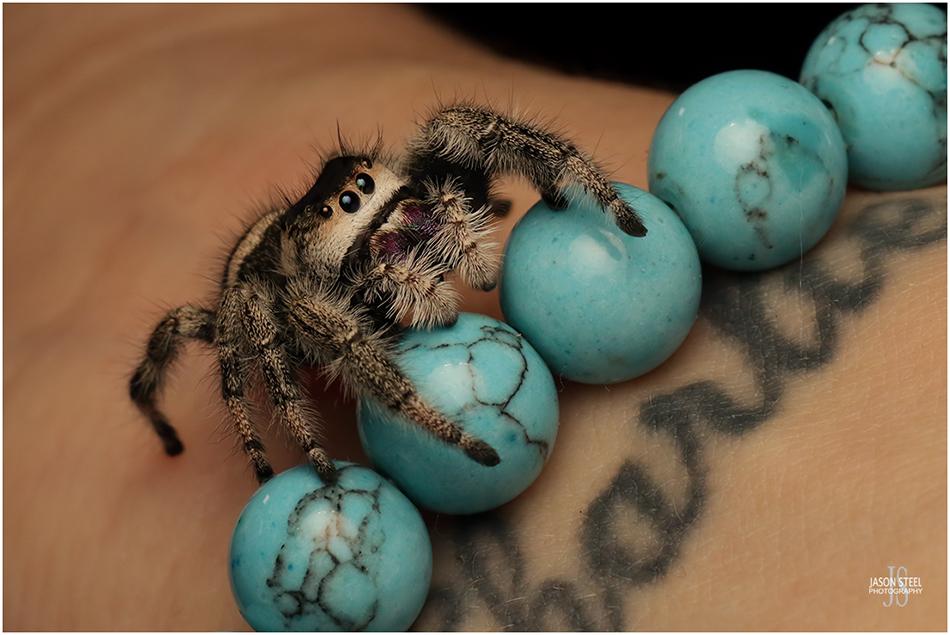
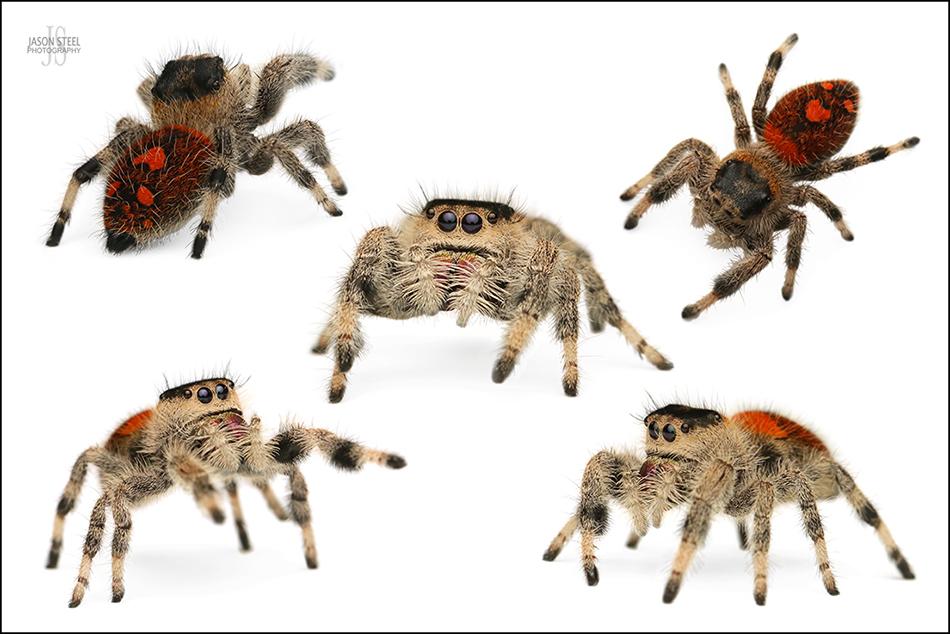
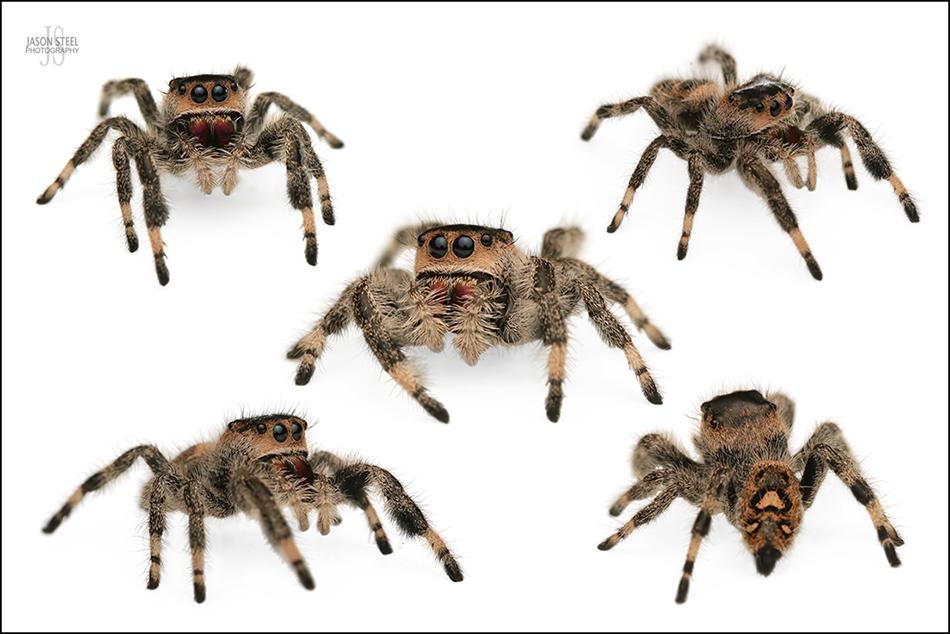
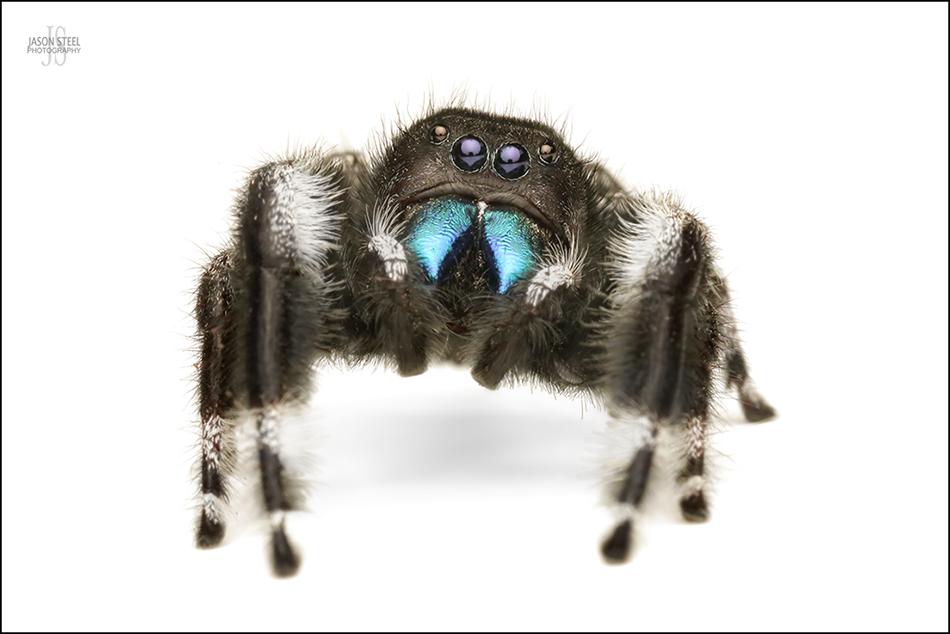
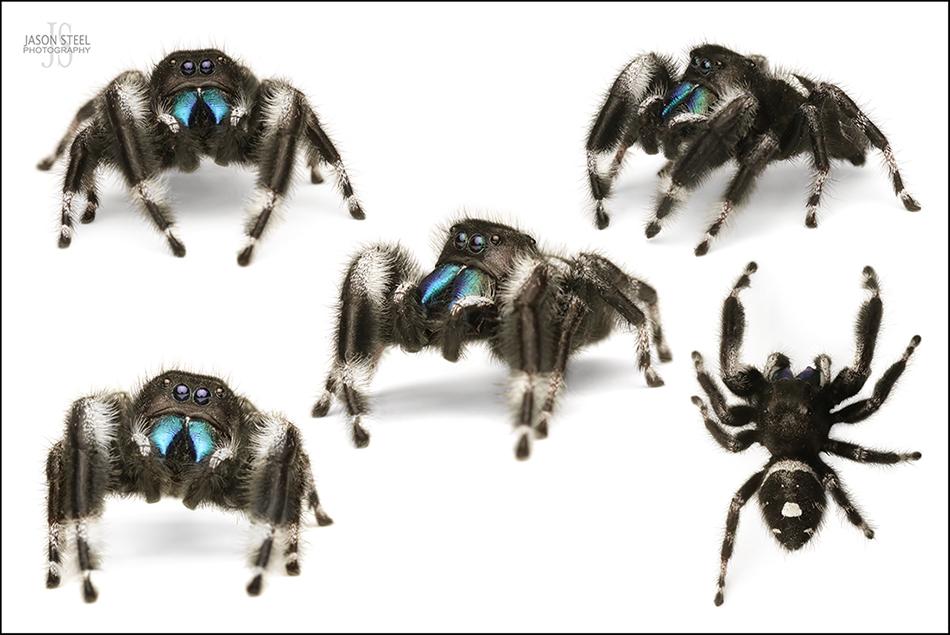
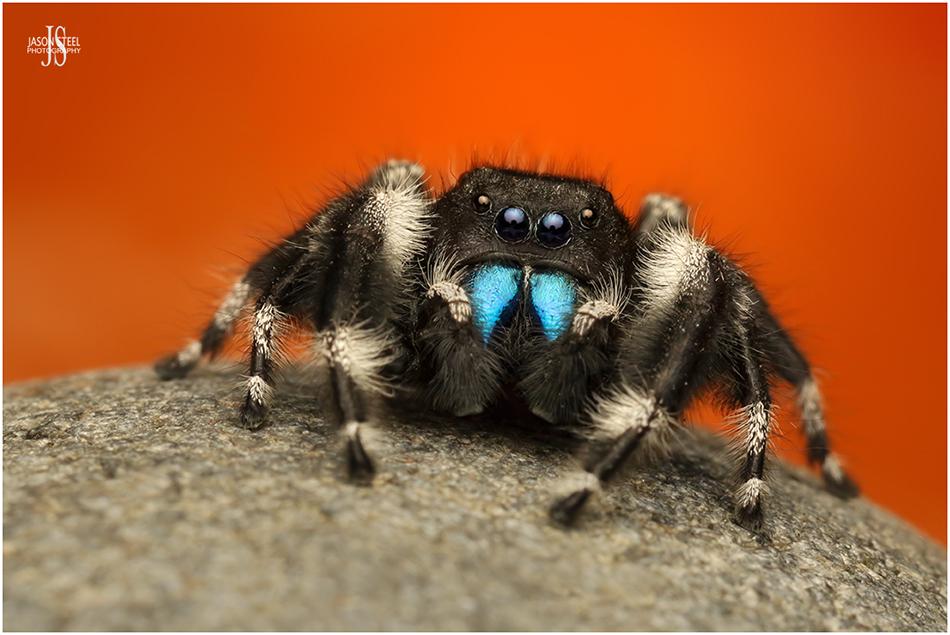
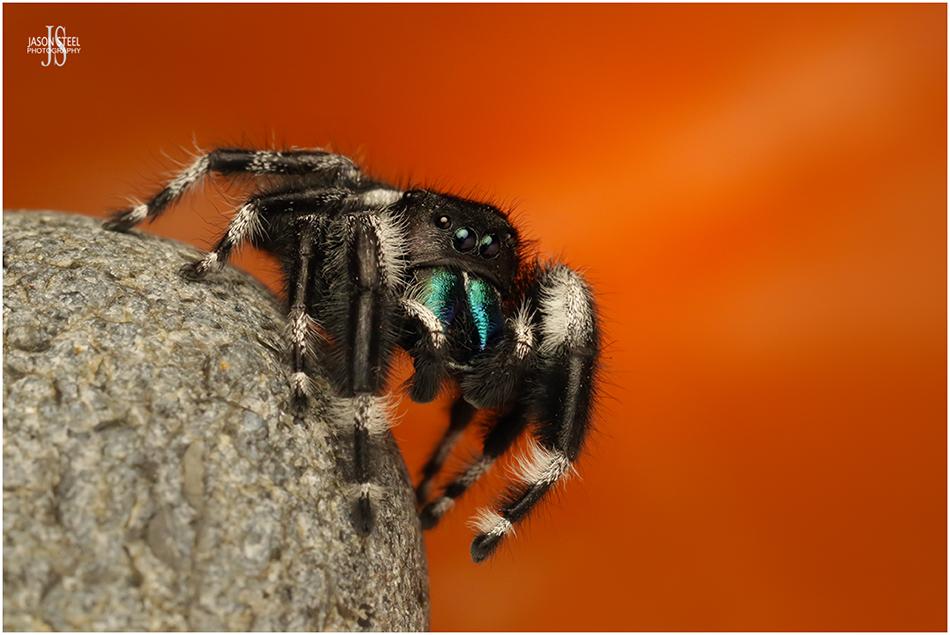
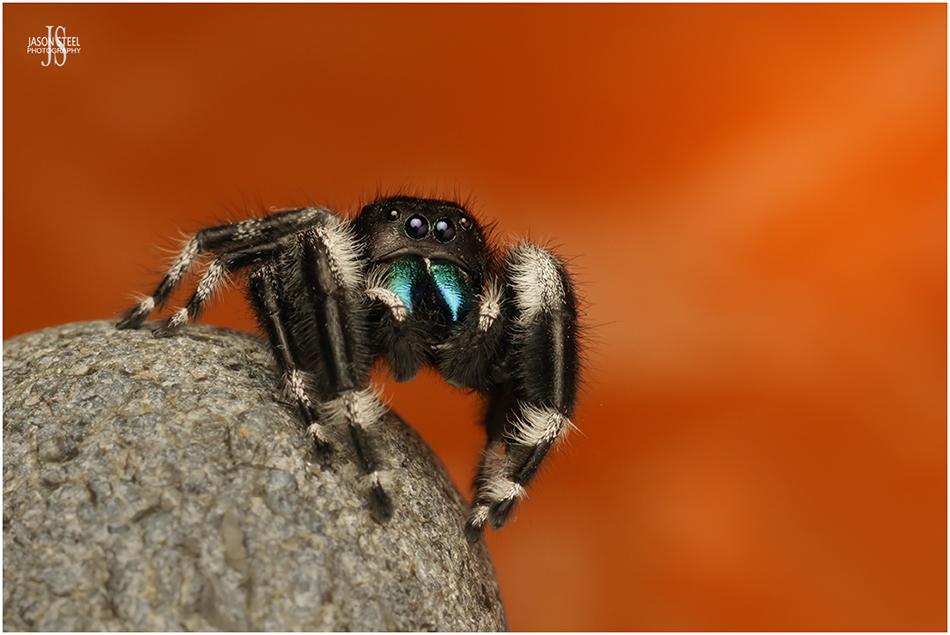
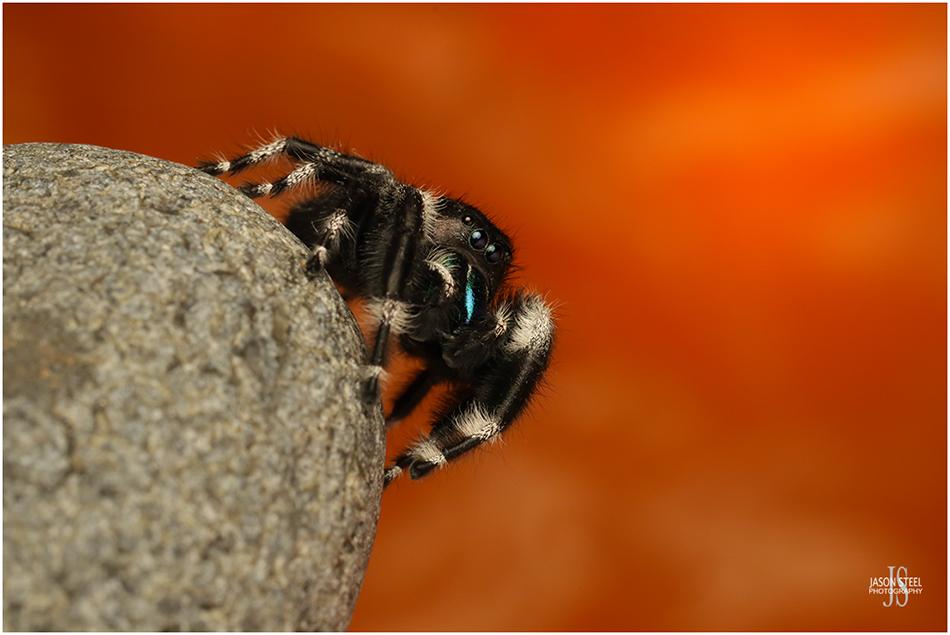
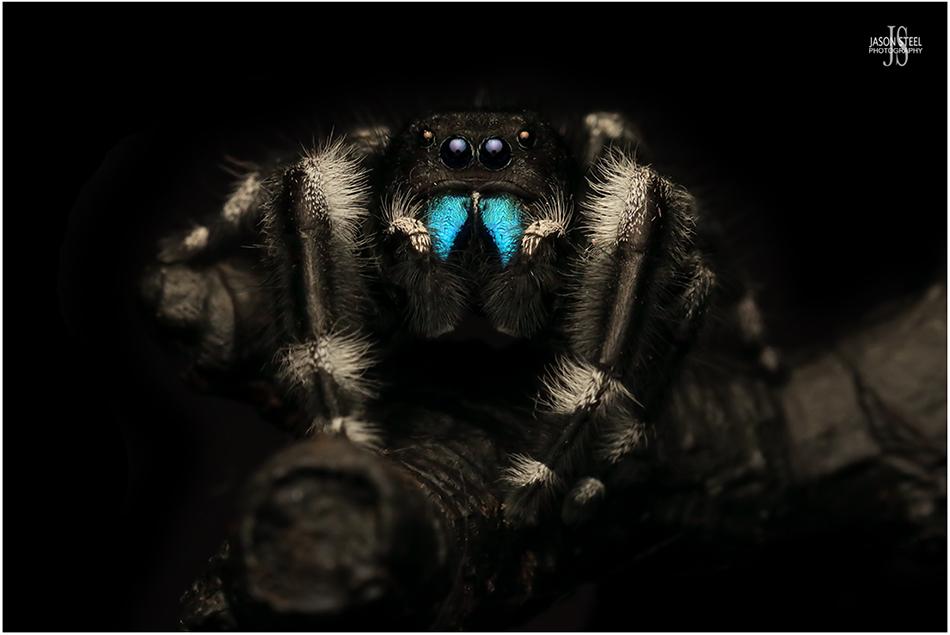
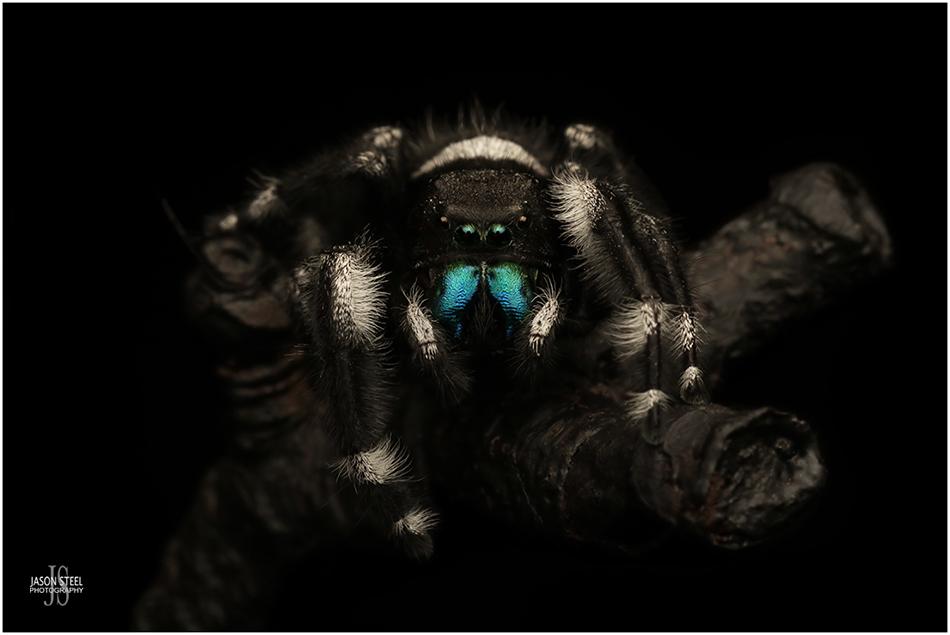
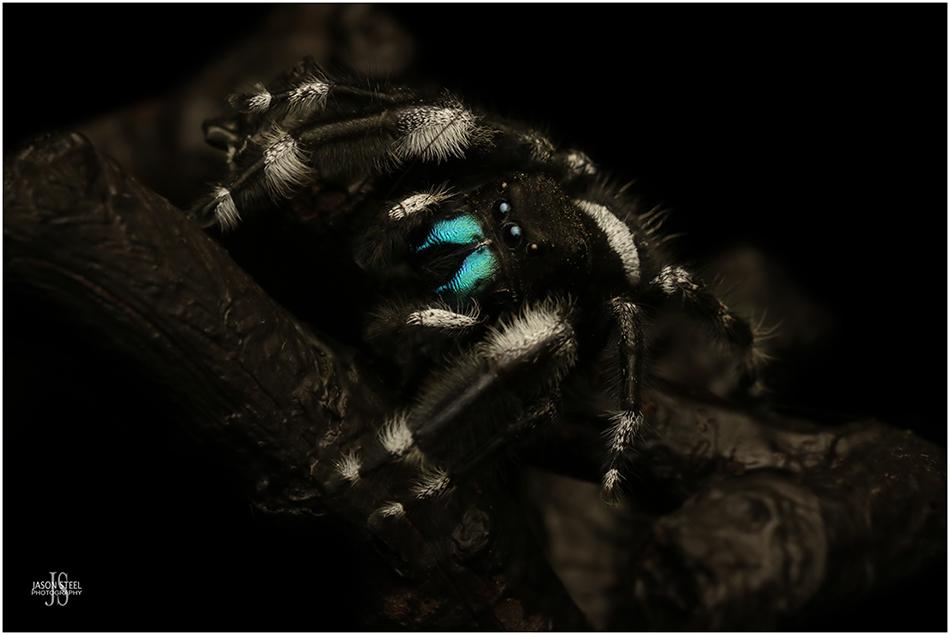
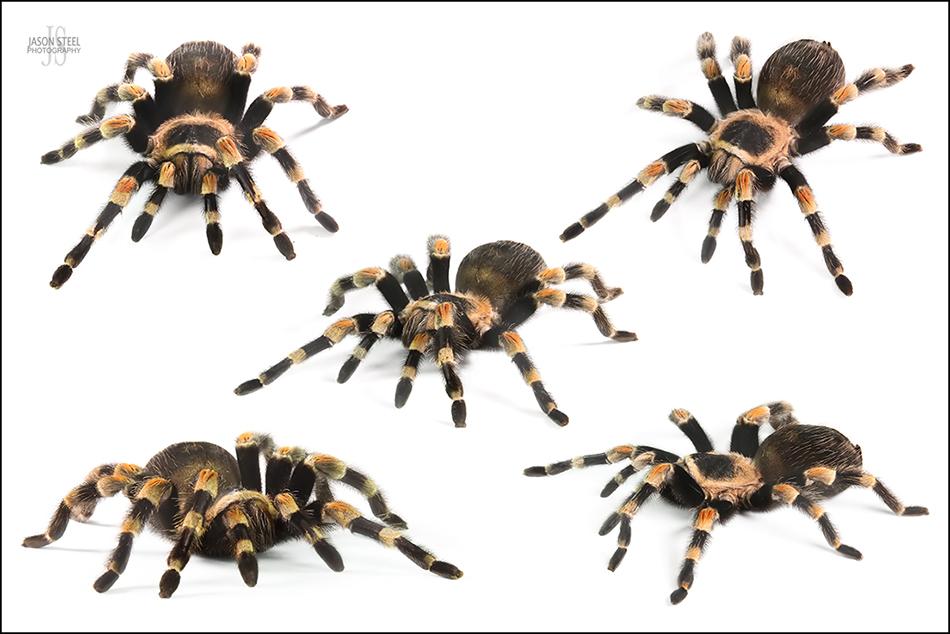
48mm Mexican Red-Knee Tarantula, which I kept in captivity until it could be rehomed.
Mexican Red Knee Tarantula (Brachypelma smithi)
Because of its large size, bright colours and usually docile nature, this species of tarantula is one of the most popular spiders in the pet trade. Females have been known to live for 25-30 years, whilst males usually only live for 3-6 years. The bite of this spider is not considered dangerous to humans but could be quite unpleasant. This is due to the size of the large fangs, rather than the venom of the spider, which has very little effect on humans. The fangs of new world tarantulas are not their only form of defence though. The abdomen of a new world tarantulas, including that of the Mexican Red Knee Tarantula, is covered in urticating hairs, which the spider will flick with its back legs in the direction of anyone it considers to be a threat. These barbed bristles can embed themselves in the eyes of humans, or other animals, causing great irritation and discomfort. Exposure to these hairs can cause intense inflammatory reactions if they reach your eyes or respiratory system. Females can have a body-length of up to 60mm, whilst the smaller males can still reach 50mm. The leg-span can reach an impressive 140mm. Whilst the males usually have slightly shorter bodies, they tend to have longer legs than the female. Brachypelma smithi Is very similar in appearance to the other species of Mexican Red-Knee Tarantula, Brachypelma hamorii, which is also found in Mexico. However, there is some dispute whether both Brachypelma smithi and Brachypelma hamorii could actually be the same species.